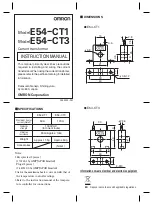
User’s Guide – 900MHz Stereo Audio Transmitter & Receiver
11
Technical Specifications
PAT900 Transmitter
Operating Frequency (24 Channels)
902 – 928 MHz
Operating Voltage Range
7.5 to 18VDC
Operating Current
120 mA
Audio Signal-to-Noise Ratio*
78 dB
Audio Frequency Response (+/-2dB)*
30 - 20,000 Hz
Audio Distortion (@ 1kHzm +/-25KHz deviation)*
0.3%
RF Output Power
1 mW (0 dBm)
Frequency Stability (over operating temp.range)
+/-30 ppm
FM Deviation
+/-40 KHz
Harmonic Suppression
-45 dBc
Operating Temperature Range
-20
°
C to +70
°
C
Storage Temperature Range
-50
°
C to +150
°
C
*Audio performance specifications are “end-to-end” characteristics,
when used with Model AR900-32 receiver.
PAR900M Receiver
Operating Frequency (24 Channels)
902 – 928 MHz
Operating Voltage Range
7.5 to 18VDC
Operating Current
180 mA
Audio Frequency Response (+/-2dB,)*
30 - 20,000 Hz
Audio Channel (L/R) Separation (@ 1KHz)*
30 dB
Audio Signal-to-Noise Ratio*
50 dB
Audio Distortion (@ 1kHzm +/-25KHz deviation)*
0.3%
RF Input Sensitivity (30 dB SNR)
-106 dBm
IF Bandwidth
180 KHz
Antenna Input Impedance
50 Ohms
Frequency Stability (over operating temp. range)
+/-30 ppm
Operating Temperature Range
-20
°
C to +70
°
C
Storage Temperature Range
-50
°
C to +150
°
C
*Audio performance specifications are “end-to-end” characteristics,
when used with Model AT900-32 transmitter.
12
Applied Wireless, Inc.
The following sections pertain exclusively to the Audio
Transmitter, Model AT900-32:
This product incorporates transmitter module FCC ID: QY4265
This device complies with Part 15 of the FCC Rules. Operation is
subject to the following two conditions:
(1)
This device may not cause harmful interference and
(2)
This device must accept any interference received, including
interference that may cause undesired operation.
INSTRUCTION TO THE USER (required by the FCC)
This equipment has been tested and found to comply with the
limits for a class B digital device, pursuant to part 15 of the FCC
Rules. These limits are designed to provide reasonable protection
against harmful interference in a residential installation. This
equipment generates, uses and can radiate radio frequency energy
and if not installed and used in accordance with the instructions,
may cause harmful interference to radio communications.
However, there is no guarantee that interference will not occur in a
particular installation. If this equipment does cause harmful
interference to radio or television reception, which can be
determined by turning the equipment off and on, the user is
encouraged to try to correct the interference by one or more of the
following measures:
•
Reorient or relocate the receiving antenna.
•
Increase the separation between the equipment and
receiver.
•
Connect the equipment into an outlet on a circuit different
from that to which the receiver is connected.
•
Consult the dealer or an experienced radio/TV technician
for help.
This equipment has been certified to comply with the limits for a
class B computing device, pursuant to FCC Rules. In order to
maintain compliance with FCC regulations, shielded cables must
be used with this equipment. Operation with non-approved
equipment or unshielded cables is likely to result in interference to
radio and TV reception. The user is cautioned that changes and
modifications made to the equipment without the approval of
manufacturer could void the user’s authority to operate this
equipment.


























